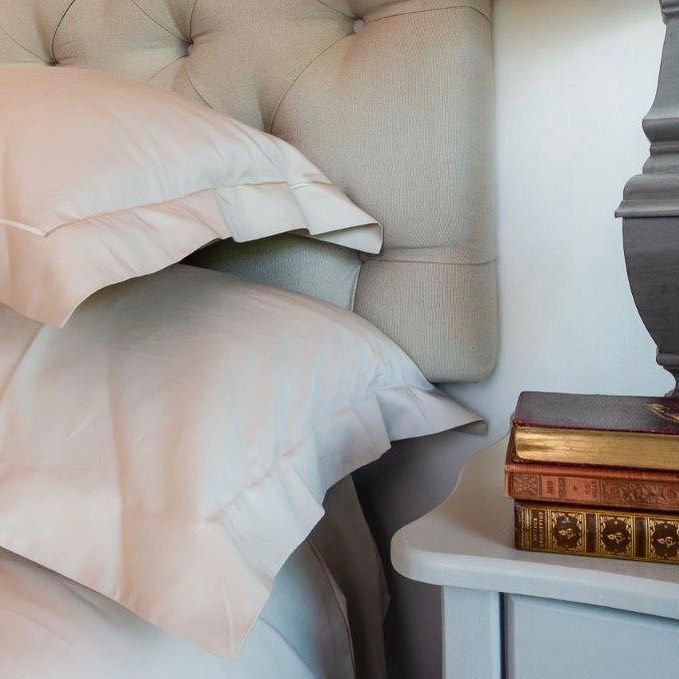Cleaning Hacks: Stain Removal Tips From Linen Drawer
Quality linen is an investment and there is nothing worse than a spill or stain that you simply can’t remove from your precious wares. Linen Drawer presents a comprehensive list of stain removal tips to help us make the most of our linen.
Acids – Apply baking soda onto the wet patch to neutralise the acid or rinse well with a lot of fresh water. Wash after neutralisation. Handle with care as acids will weaken the fabric.
Adhesive tape – Harden with ice and remove the adhesive tape. Soak in methylated spirits or kerosene, followed by a good wash.
Alcohol – Wash fresh stains with plenty of warm water. If the stain persists, rub with glycerine, leave to stand for 30 minutes and rinse. Older stains may be removed by spotting with surgical spirits or commercial pre-wash stain remover, followed by a good wash. Bleach should be used as a last resort. (Glycerine and surgical spirits are available at pharmacies).
Bleach – rinse immediately in a solution of one table spoon of vinegar to one litre of cold water.
Blood – spot with a cool salt solution (2 teaspoons of salt per litre of water) and rinse with plenty of fresh water. Older stains: make up a solution of one part 20 vol. hydrogen peroxide with nine parts of water. Rinse affected area in the solution, then rinse well with fresh water. If the stain persists, make a solution of one teaspoon oxalic acid in 50ml water at 50°C and sponge. (oxalic acid powder and solution should be handled with suitable rubber gloves).
Butter – Scrape away excess and wash in warm water with “Stain Zapper”. If the stain persists, don’t iron. Rinse in surgical spirits or professionally dryclean the product. (Once ironed in, fatty stains are very difficult to remove).
Candle wax & crayon – Scrape away excess. Harden the wax in the freezer. Shatter the wax. Wash with detergent or dryclean. If wax stain persists, place fabric between brown paper and iron. The brown paper will absorb the wax. If a colour stain persists, sponge with a 50/50% solution of methylated spirits and water.
Chewing gum – Harden with ice. Remove as much gum as possible. Remove excess by soaking in a solution of kerosene and water.
Coffee – Rinse in warm water until stain fades, then wash normally.
Curry – Rinse in warm water until stain fades, then apply glycerine and rub lightly. Let it stand for thirty minutes, then wash normally. (Glycerine is available at most pharmacies).
Egg – Soak in warm water and detergent. Do not use hot water as this hardens the stain. Wash normally.
Fat – Scrape away excess and wash in warm water with “Stain Zapper”. If the stain persists, don’t iron. Rinse in surgical spirits or professionally dryclean the product. (Once ironed in, fatty stains are very difficult to remove).
Grass – Sponge with methylated spirits then wash as normal
Ink – Soak in pure lemon juice. The stain can also be soaked in milk. Sour milk is said to be more effective than fresh, but both will work.
Margarine – Scrape away excess and wash in warm water with normal detergent. If the stain persists, don’t iron. Rinse in surgical spirits or professionally dryclean the product. (Once ironed in, fatty stains are very difficult to remove).
Mildew – If caught early enough, mildew will wash out with normal detergent. A mild chlorine bleach solution should be used in cold water. This will bleach the fabric as well, which may be problematic. (prevention is certainly better than cure)
Nail Polish – Apply acetone to remove and then wash as normal. (Not suitable for viscose rayon / viscose blends)
Oil – Blott off excess oil with tissue / toilet paper. Rub lightly using dishwashing liquid and allow to stand for 10-15 minutes. Wash as per wash care instructions. If stain persists spot soak and wash in “Stain Zapper”.
Paint – PVA (waterbased): Rinse immediately with copious amounts of water. If dried, apply glycerine or acetone to soften. Then attempt to wash out. OIL based enamels: Soak area in turpentine or kerosene, then wash as normal.
Perspiration – Fresh stains should wash out easily. If the stain persists, sponge with a strong ammonia solution and rinse immediately. (always test for colourfastness when using ammonia solution).
Rust – Rinse spot in a warm solution containing 1 teaspoon of oxalic acid per litre of water. (use suitable rubber gloves).
Tar – sponge with a solution of one part Jeyes Fluid to three parts water and then wash as normal.
Tea – Rinse in warm water until stain fades, then apply glycerine and rub lightly. Let stand for thirty minutes and then wash as normal. (Glycerine is available at most pharmacies).
Urine – First soak in a solution of one tablespoon of ammonia in a cup of warm water. If unsuccessful, soak in a solution of half vinegar and half water. Wash with detergent.
Wine – Wash fresh stains with plenty of warm water. If the stain persists, rub with glycerine, leave to stand for 30 minutes and rinse. Older stains may be removed by spotting with surgical spirits or commercial pre-wash stain remover, followed by a good wash. Bleach should be used as a last resort. (Glycerine and surgical spirits are available at pharmacies).
Keep this list handy for when you need it most.
For more, shop quality linen and bedroom essentials at Linen Drawer.
You might also like...
-
Incanda Presents The NEW Buldan Bathroom Collection

We are excited to introduce the first selection of towels and bath rugs from Incanda. Situated in the hillsides of the Denizli province of Turkiye, ...
-
Elevate Your Sleep Experience: The Crucial Role of Pillows and Duvet Inners

Are you tired of restless nights and waking up with aches and pains? It might be time to pay closer attention to your bedding essentials: ...
-
Sweet Dreams are made@Scale…

In the bustling world of large-scale accommodations, finding the perfect balance between quality, affordability, and functionality can often feel like an elusive dream. However, with ...
-
Unlock the Power of Quality Sleep: World Sleep Day 2024 with Sloom

Studies suggest that a significant portion of the South African population does not get adequate sleep, with only 6.25 – 6.5 hours of sleep per ...





























